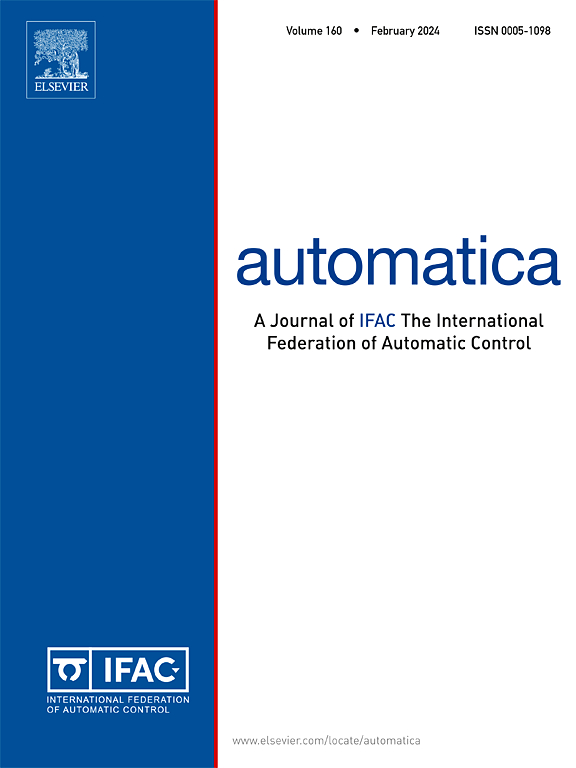Infinite-horizon optimal control of nonlinear discrete-time systems: HJB pde, Hamiltonian dynamics and invariant manifolds
IF 5.9
2区 计算机科学
Q1 AUTOMATION & CONTROL SYSTEMS
引用次数: 0
Abstract
Nonlinear discrete-time optimal control problems are studied over an infinite horizon with the aim of establishing a connection between the solution of the Bellman equation and the trajectories of the Hamiltonian difference dynamics associated with the problem. First, a discrete-time counterpart of the Hamilton–Jacobi–Bellman partial differential equation is introduced and discussed. The latter is then further instrumental for showing that a certain manifold, involving the costate variable and the gradient of the value function, is invariant for the Hamiltonian dynamics, hence recovering a well-known property of continuous-time optimal control problems. This feature is then leveraged to envision an episodic learning strategy based on the notion of invariant manifold.
非线性离散系统的无限视界最优控制:HJB理论,哈密顿动力学和不变流形
在无限视界上研究非线性离散时间最优控制问题,目的是建立Bellman方程的解与与该问题相关的哈密顿差分动力学轨迹之间的联系。首先,引入并讨论了Hamilton-Jacobi-Bellman偏微分方程的离散时间对应方程。然后,后者进一步有助于表明某个流形,包括协态变量和值函数的梯度,对于哈密顿动力学是不变的,从而恢复了连续时间最优控制问题的一个众所周知的性质。然后利用该特性来设想基于不变流形概念的情景学习策略。
本文章由计算机程序翻译,如有差异,请以英文原文为准。
求助全文
约1分钟内获得全文
求助全文
来源期刊

Automatica
工程技术-工程:电子与电气
CiteScore
10.70
自引率
7.80%
发文量
617
审稿时长
5 months
期刊介绍:
Automatica is a leading archival publication in the field of systems and control. The field encompasses today a broad set of areas and topics, and is thriving not only within itself but also in terms of its impact on other fields, such as communications, computers, biology, energy and economics. Since its inception in 1963, Automatica has kept abreast with the evolution of the field over the years, and has emerged as a leading publication driving the trends in the field.
After being founded in 1963, Automatica became a journal of the International Federation of Automatic Control (IFAC) in 1969. It features a characteristic blend of theoretical and applied papers of archival, lasting value, reporting cutting edge research results by authors across the globe. It features articles in distinct categories, including regular, brief and survey papers, technical communiqués, correspondence items, as well as reviews on published books of interest to the readership. It occasionally publishes special issues on emerging new topics or established mature topics of interest to a broad audience.
Automatica solicits original high-quality contributions in all the categories listed above, and in all areas of systems and control interpreted in a broad sense and evolving constantly. They may be submitted directly to a subject editor or to the Editor-in-Chief if not sure about the subject area. Editorial procedures in place assure careful, fair, and prompt handling of all submitted articles. Accepted papers appear in the journal in the shortest time feasible given production time constraints.
 求助内容:
求助内容: 应助结果提醒方式:
应助结果提醒方式:


